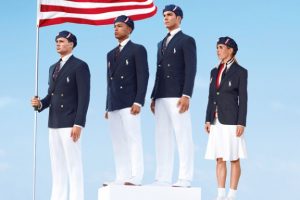
Every organization can (and will) make mistakes and face harsh criticism. It’s how you cope with the criticism that determines if your reputation will come out for the better after the crisis or if it will forever be marred.
The Olympics opening ceremony uniforms for the American team are the classic and clean-lined style we have come to expect by designer Ralph Lauren. Embodying the red, white and blue, Lauren once again provided the iconic look for the athletes that he has done in years past when he unveiled the uniforms July 10. Just one problem; from head to toe the entire ensemble was manufactured in China, with “Made in China” tags to prove it.
By the next day, the national media was reporting on this embarrassing faux pas for the brand and the U.S. Olympic Committee, which is in partnership with Lauren to produce the uniforms. By July 12, members of Congress were weighing in on the matter, with Sen. Harry M. Reid (D-Nev.) providing the severest sentiments.
“I think they should take all the uniforms, put them in a big pile and burn them and start all over again,” said the Senate majority leader. “If they have to wear nothing but a singlet that says U.S.A. on it painted by hand, that’s what they should wear. We have people in America, in the textile industry — we have people in the textile industry who are desperate for jobs.”
When questioned about the outsourced production, the USOC first responded defending the uniforms with a statement that didn’t entirely address the issue, just saying the organization was proud of its partnership with Lauren. For the brand itself, Ralph Lauren didn’t respond until July 13, promising that uniforms for the 2014 Winter Games would be produced in the United States. The same day, USOC CEO Scott Blackmun also released an updated statement that did begin to change the committee’s stance on the matter.
Though I applaud Ralph Lauren and USOC for listening to the outcry and making changes to its production, there are three key tasks that were missed in this crisis communications event:
1) Be aware of your current environment. I’ve previously addressed making a SWOT analysis for crisis communications planning. For a major undertaking such as producing the U.S. Olympic team uniforms, a potential threat would be manufacturing operations in a foreign country. In a time of domestic economic downturn and resentment toward outsourcing jobs, producing uniforms outside of the country for American athletes competing in the premier event for worldwide primacy would constitute a threat of major concern. If this couldn’t be avoided then preparations on how to respond to the impending queries should be at the ready with explanations of why it must be that particular way. This wasn’t the case for Ralph Lauren since the brand has promised to make future U.S. Olympics team uniforms domestically. Unfortunately, due to manufacturing logistics, the uniforms couldn’t be replaced in time for the London games later this month.
2) Early response is vital. Ideally, you would be able to respond to a crisis communications event within one hour after it erupts. Taking three days after the crisis has begun to make your statement is much too long. In those days, filling the void left when the brand wasn’t talking, news organizations and bloggers from all across the nation were reporting with nothing to contest what was being said. When you Google “Ralph Lauren, Olympic Uniforms” you receive about 3.2 million hits.
3) If you’re in the wrong, apologize. Both statements from Ralph Lauren and USOC do a great job showing that the organizations are listening to the concerns of their consumers and committed to making positive changes where needed. However, there is no apology from either entity about the embarrassment that has been caused or the insensitivity toward the plight of American manufactures competing with foreign production. From agreeing to change its production methods, Ralph Lauren understands that producing iconic American uniforms for a global contest like the Olympics outside of the country isn’t the best decision. If your organization does something wrong, own up to it, apologize and then explain what you’ll do to fix it. Ralph Lauren and USOC have only so far done the last part.
Your company at some point will face the critics for something that you thought would be great. Know what’s going on around you, be ready to respond, and own what you’ve done. What do you think about the “Made in China” controversy? Tell me in the comments how you would have handled the criticism.



